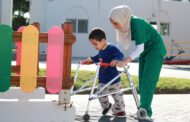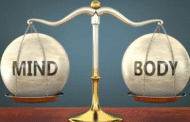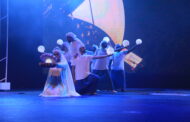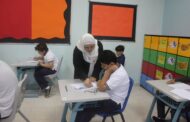Review paper -Part1
By Dr Ali Saber Mohamed
Neurology and Psychiatry consultant
Alisaber63@gmail.com
2023
Read also : Physical activity interventions for children with autism spectrum disorder – part 2
Introduction:
Non-pharmacological interventions to treat Autism Spectrum Disorder (ASD) are a wide range practice field. These include; speech and language, Intensive Behavioral Intervention, Applied Behavior Analysis, Occupational and Physical Therapy, Art and Music Therapy, etc. Multiple Physical Activity interventions are practiced all over the world with active studies and publications. This encouraged me to highlight its importance. My review paper is based on PubMed search of articles written in English and published in peer- reviewed journals.
Key words:- autism, motor skills, physical activity, interventions, martial arts, horseback riding , aquatics.
Motor abnormalities in ASD:
Autism spectrum disorder (ASD) is a neurodevelopmental disorder characterized by poor social communication and social interaction, as well as restricted repetitive patterns of behavior, interests, and activities (APA, DSM 5-TR,2022). Children with ASD often experience difficulties performing fundamental motor skills, such as walking, running, and jumping (Staples KI et al,2010). Motor comorbidities exist in over 87% of children diagnosed with ASD, children do not outgrow motor challenges with age, and these difficulties persist into adolescence and can negatively impact everyday activities (Bhat A,2020). Motor difficulties include delayed acquisition of gross and fine motor skills, impaired bilateral coordination skills, poor postural control and balance skills. Impaired gait patterns, deficits in motor planning, as well as poor imitation and interpersonal synchrony skills (Shahane V et al ,2023).
Not all motor skills are equally affected by ASD , e.g static balance is more significantly impaired than other motor skills , suggesting that there is a specificity of motor impairments in ASD that particularly affect balance , as balance requires complex interplay of information processing, motor planning and timing, and sequencing of muscle movements (Ament K et al ,2015), (Stins J and Emck C, 2018).
Underdeveloped motor skills may induce a pattern of movement avoidance, body weight gain, and reduced physical interaction with peers. As a result, the differences in motor competence with typically developing peers will increase leading to the so-called skill learning gap (Wall A ,2004).Bhat (2012) reported a motor delay of 3-6 months in children with ASD. Liu (2013) recorded lower scores when testing children with ASD aged 3-16 years for gross and fine motor skills. Morris (2015) suggested that patients with ASD have a whole range of subtle motor control deficits that include postural instability among other deficits. Oster (2022) found 80% of children with ASD testing abnormal for balance and vestibular function.
Horseback riding
Among physical activity interventions for ASD are animal assisted activities, some of which are Equine- Assisted Activities and Therapies ( EAAT), which include:-
Therapeutic Horseback Riding (THR)
Hippo therapy (HPOT)
Psycho educational Horseback Riding (PER)
Horseback riding gives children opportunity to practice motor and social skills and explore environment. Also, social behaviors increase in children with autism in the presence of animals. Horseback riding is a means to reach recommended physical activity levels and is associated with greater physical and mental wellbeing when compared with non-pet owning people ( Marguerite O, (2013).
Harris and Williams (2017) summarized the benefits of selecting horses for use in animal- assisted interventions for autism spectrum disorder :-
1- Horses are well-suited to reduce anxiety in children with ASD as they typically have calm temperaments and slower steadier movements.
2- Horses are less likely to move in a rapid unpredictable way, which children with ASD dislike.
3- Horses move to a rocking rhythm that can be calming.
4- Horses are responsive to their rider’s subtle movements and cues, so the rider needs awareness and control of his own body movements in order to interact with the horse
Sudha (2018) reported other hypotheses that explain the effects of horseback riding on persons with autism; riding and working together with the horse to engage in therapeutic activities involves a nonverbal joint attention or shared attention experience that serve for improving behaviors and social communication skills, human – equine experience and rhythmic movement of riding the horse promotes a relaxing context, which have a calming effect on children with ASD.
Among studies on the subject, Zhao(2021) found after 16 weeks of intervention that a therapeutic horseback riding program (THR) significantly enhanced the sub domains of social and communication skills in the areas of social interaction, responsibility, and self-control.
In Gabriel’s (2015) study, the therapeutic horseback riding intervention lead to improvement on measures of irritability, hyperactivity, social cognition and social communication, along with spoken new words and number of words. To explain this effect, studies have cited reductions in stress hormone levels ( i.e cortisol )in children , this leads to reduction of stress-related maladaptive behaviors ( Pendry P , 2014 ).
In conclusion, horseback riding, among other equine-assisted activities have beneficial effects for children and adolescents with ASD.
To be continued
References:
- Ament K et al (2015). Evidence for specificity of motor impairments in catching and balance in children with autism. J Autism Dev Disord, 2015 March; 45(3):742-751
- American Psychiatric Association. Diagnostic and statistical manual of mental disorders, American psychiatric association, Washington, DC, USA, 5th edition- text revision, 2022
- Ansari S et al (2021). The effects of aquatic versus kata techniques training on static and dynamic balance in children with ASD. J Autism and Devel Disord,2021;51(9)):3180-3186
- Baccouch R et al (2015). Kung-fu versus swimming training and the effects on balance abilities in young adolescents. Physical Therapy in Sport, 2015; 16(4):349-354.
- Battaglia G et al (2019). Influence of a specific aquatic program on social and gross motor skills in adolescents with ASDs: three case reports. J Funct Morphol Kinesiol, 2019;4:27
- Bhat A (2020). Is motor impairment in autism spectrum disorder distinct from developmental coordination disorder? A report from the SPARK study. Phys Ther, 2020 Apr 17; 100 (4):633-644
- Bhat A et al (2012). Relation between early motor delay and later communication delay in infants at risk for autism. Infant behavior and development, 2012;35(4):838-840
- Caputo G et al (2018). Effectiveness of a multisystem aquatic therapy for children with ASDs. J Autism Dev Disord, 2018;48:1945-1956
- Fatimah B et al (2012). Kata techniques training consistently decreases stereotypy in children with ASD. Res Dev Disabil, 2012 Jul-Aug; 33(4): 1183-1193
- Fatimah B et al (2016). The effect of Karate techniques training on communication deficit of children with ASD. J Autism Dev Disord, 2016 Mar; 46(3): 978-986
- Fong SS et al (2012). Taekwondo training speeds up the development of balance and sensory functions in young adolescents. J Science Medicine in Sport. 2012 Jan; 15(1):64-68
- Fong SS et al (2013). Differential effect of Taekwondo training on knee muscle strength and reactive and ststic balance controlin children with developmental coordination disorder: a randomized controlled trial. Res Dev Disabil, 2013 May
- Fong SS, Ng GY ( 2011 ). Does Taekwondo training improve physical fitness?. PHYSICAL Therapy Sport, 2011;12:100-106
- Fragala-Pinkhan MA et al (2011). Group swimming and aquatic exercise program for children with ASD: a pilot study. Dev Neurorehabilit, 2011;14:230-241
- Gabriel’s RL et al (2015). Randomized controlled trial of therapeutic horseback riding in children and adolescents with ASD. J Am Acad Child Adolesc Psychiatry, 2015;54(7):541-9
- Greco G and DeRonzi R (2020). Effect of Karate training on social, emotional, and executive functioning in children with ASD. J Physical Education Sport, 2020;20(4):1637-1645
- Harris A and Williams JM (2017). The impact of horse riding intervention on the social functioning of children with ASD. Int J Environ Res Public Health,2017;14(7):776
- Liu T and Breslin CM (2013). Fine and gross motor performance of the MABC-2 by children with ASD and typically developing children. Research in Autism Spectrum Disorder, 2013;7(10):1244-1249.
- Marguerite O et al (2013). Social behaviors increase in children with autism in the presence of animals compared to toys. PlosONE,2013;8:e57010
- Marzouki H et al (2022). Effects of aquatic training in children with ASD. Biology ( Basel), 2022;11(5):657
- Morris SL et al (2015). Differences in the use of vision and proprioception for postural control in ASD. Neuroscience,2015;307:273-280
- Mortimer R et al (2014).The effectiveness of hydrotherapy in the treatment of social and behavioral aspects of children with ASDs: a systematic review. J Multidiscip Healthc, 2014; 7:93-104
- Movahedi A et al (2013). Improvement in social dysfunction of children with ASD following long term Kata techniques training. Research in Autism Spectrum Disorders, 2013; 7(9): 1054-1061
- Oster LM and Zhou G (2022). Balance and vestibular deficits in pediatric patients with ASD: an underappreciated clinical aspect. Autism Research and Treatment, 2022: 7568572
- Pan CY (2010). Effects of water exercise swimming program on aquatic skills and social behaviors in children with ASDs. Autism, 2010;14(1):9-28
- Pendry P et al (2014). Randomized trial effects of equine facilitated learning on adolescent basal cortical levels. Human-Animal Interaction Bulletin, 2014;2(1):80-95
- Rabeeh Hariri et al (2022). An overview of the available intervention strategies for postural balance control in individuals with ASD . Autism Research and Treatment . 2022:3639352
- Shahane V et al (2023). Effects of physical activity and exercise – based interventions in young adults with autism spectrum disorder: A systematic review. Autism , 2023 May 1
- Stamenkovic A et al ( 2022 ). Effects of participating in martial arts in children: a systematic review. Children, 2022; 9:1203
- Staples KI et al (2010). Fundamental movement skills and autism spectrum disorders. J Autism Dev Disord, 2010; 40:209-217
- Stins J and Emck C (2018 ). Balance performance in autism: a brief overview. Front Psychol, 2018;9;901
- Sudha M Srinivasan et al (2018). Effects of equine therapy on individuals with ASD: a systematic review. Rev J Autism Dev Disord , 2018;5(2):156-175
- Wall A (2004). The developmental skill- learning gap hypothesis. Implications for children with movement difficulties. Adapt Phys Act Q, 2004;21:197-218
- Yilmaz I et al (2004). Effects of swimming training on physical fitness and water orientation in autism. Pediatrics International, 2004;46(5):624-626
- Yumi Kim et al ( 2016 ). Effects of Taekwondo intervention on balance in children with ASD. J Exerc Rehabil, 2016 Aug; 12(4):314-319
- Zhao M et al(2021). Effects of a therapeutic horseback riding program on social interaction and communication in children with autism. Int J Environ Res Public Health,2021;18(5):2656

























